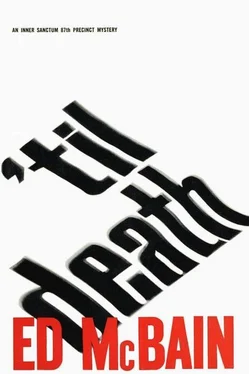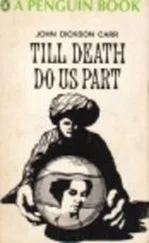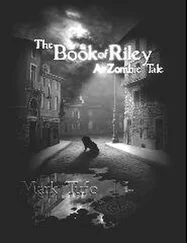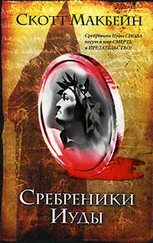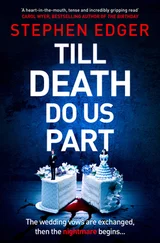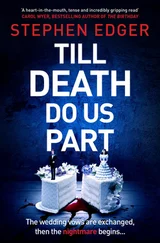And the wedding guests cheered as Marty Sokolin lowered the muzzle of the rifle to the window sill and leveled his sights on Tommy Giordano’s head.
If police work is half doggedness and half patience, it is also half luck and half blind faith. Four halves, obviously, equal two wholes. Two holes were what Meyer Meyer and Bob O’Brien needed in their heads the way they needed the legwork they were doing in tracking down Marty Sokolin.
Meyer Meyer would have been extremely content to have lingered in the delicatessen sniffing of the savory smells there, rather than to leave the place in search of a potential killer. The smells of a delicatessen, especially a kosher deli, had always been mysterious, intriguing scents to Meyer. When he was a boy, he had no idea that people actually went into delicatessens to make purchases. His mother would take him for a stroll away from their Gentile neighborhood, into the nearest ghetto, and there she would seek out a delicatessen. Standing in the door to the shop, she would allow little Meyer to sniff to his heart’s content. Until the time he was fifteen and bought his first nickel a shtickel, Meyer held the unshakable conviction that delicatessens were for smelling only. He still felt rather uneasy when making a purchase in one, somewhat like a heathen defiling a temple.
He did not make a purchase in the delicatessen on Dover Plains Avenue. He made inquiries concerning the man with the trombone case, was promptly rebuffed, and then went into the street in further search of what was beginning to look like a rather elusive needle. The search was conducted in a very scientific manner based on established investigatory technique. The search was conducted by stopping passers-by and asking them if they had seen a man carrying a trombone case.
Now such painstaking investigatory technique is surely recommended by Scotland Yard and the Nassau County Police and the Sureté and the Gestapo. It is calculated to separate, through a process of carefully phrased questions (such as, “Did you see a man with a trombone case walk by here?) those citizens who had and those who had not witnessed the passage of the sought suspect. It was important, of course, to snap off the questions with the properly authoritative and universally accepted police tone. Police tone is a part of police procedure. The sentence, “Did you see a man with a trombone case walk by here?” when delivered by a layman untrained in police tone could result in a plethora of confused answers. When delivered by a man who had attended the Police Academy, a man well versed in the ways of investigatory technique, a man skilled at the art of interrogation, the question assumed significance. Faced with its scientific inevitability, the person questioned was skillfully led to the point where only one of two answers was possible: yes or no. I did, or I did not see a man with a trombone case walk by here.
Meyer Meyer and Bob O’Brien, skilled inquisitors that they were, received a total of twelve “no’s” before they received a “yes.”
The “yes” led them up a street parallel to Charles Avenue. On the front stoop of a two-story frame dwelling, they got their second “yes” and began to feel that their luck she was running good. The second “yes” came from an old man with an ear trumpet.
“Did you see a man with a trombone case walk by here?” Meyer asked scientifically.
“What?” the old man yelled. “I’m a little deaf.”
“A man with a trombone case?”
“Got one inside if you want to use it,” the old man said.
“A trombone?”
“Yep. On the hall table. Just dial any number you want. This ain’t an out-of-town call, is it?”
“No, no, a trombone,” Meyer said patiently. “A musical instrument.”
“Oh, a trombone. Yes, yes. What about it?”
“Did you see a man carrying one?”
“Fellow that walked by earlier this afternoon, you mean?”
“You saw him?”
“Yep. Walked right up the street.”
“Thanks,” Meyer said gratefully. “That’s swell. Thanks a lot.”
“You can go to hell yourself, young man,” the man with the ear trumpet said. “I was only trying to be helpful.”
Night was falling. The sky was a multicolored bowl, light blue to the west where the sun had dropped below the horizon, a deeper blue above that, the blue of a sailor’s eyes, and above that a blue that was almost black, drenched with stars, the velvet, diamond-sprinkled sheath of a sexy blonde in an all-night bistro.
“We’re close to the Carella house, aren’t we?” O’Brien asked.
“Charles Avenue is the next block,” Meyer said.
“Think we’re getting close?”
“Maybe. I’m getting tired, that’s for sure.”
“There’s another customer,” O’Brien said. “Shall we ask him?”
“We’ve asked everybody else so far. Why begin discriminating at this point?”
The new customer was an eight-year-old boy. He sat on the curb with a penknife. He kept throwing the penknife into the air and watching it land, handle first, into the patch of earth in front of him. It did not seem to occur to him that a slight shift of the knife would have allowed it to enter the earth blade first. The boy seemed quite content to simply throw it into the air and have it land with a sickening thud. Over and over again, he repeated the impotent act. Meyer and O’Brien watched him for a while.
“Hello, little fellow,” Meyer said at last.
The boy looked up. His face was dirt-smeared in the fading light.
“Drop dead,” he said.
Meyer laughed feebly. “Now, now, little fellow,” he said, “we only want to ask you a question.”
“Yeah? What’s that?”
Meyer phrased the question carefully. “Did you see a man with a trombone case walk by here?”
The boy pierced him with stiletto eyes. “Drop dead,” he said. “Can’t you see I’m busy?”
“Trying to get the knife to stick into the ground?” O’Brien asked pleasantly.
“Don’t be a jerk,” the boy said. “Anybody can do that. I got a caterpillar here in this hole.”
“A caterpillar?” O’Brien said.
“Sure. I’m trying to see how many times I can clobber him before he dies. I clobbered him thirty-four times already, and he’s still moving.”
“Have you tried stepping on him?” Meyer said.
“Where’s the fun in that?” the boy asked.
“About this man with the trombone case, did you happen to see him go by?”
“Sure,” the boy said. He picked up the knife and dropped the stubby handle onto the caterpillar’s back. “Thirty-five,” he said.
“Where did he go?”
“Probably up to the wedding on the next block.”
“What makes you say that?”
“Thirty-six,” the boy said as he dropped the knife again. “I think he’s getting weak.”
“What makes you think the man went to the wedding?” Meyer said.
“Because he probably cut through the back yard. Either that, or he went into the house.”
“What house?”
“He was heading that way, anyway. He stopped on the sidewalk and turned in right there,” the boy said. “Thirty-seven. So he either cut across the back yard to play at the wedding, or else he went inside. What else could he of done? Thirty-eight. I can count all the way to a hundred.”
“Which house?” Meyer said.
“Birnbaum’s,” the boy answered. “The third house on your right.” He looked down into the hole. “I think I got the bastard,” he said. “Wow, look at all that gook come out of him.”
Meyer and O’Brien did not pause to look at the gook. Hastily, they started up the street toward the Birnbaum house. In the distance, they could hear the beginning of a faint rumbling sound — like faraway thunder.
Читать дальше
